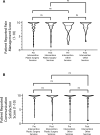Reducing Opioid Overprescribing through Procedure-specific Prescribing Guidelines
- PMID: 36699205
- PMCID: PMC9857484
- DOI: 10.1097/GOX.0000000000004776
Reducing Opioid Overprescribing through Procedure-specific Prescribing Guidelines
Abstract
Despite advances in opioid-sparing pain management, postdischarge opioid overprescribing in plastic surgery remains an issue. Procedure-specific prescribing protocols have been implemented successfully in other surgical specialties but not broadly in plastic surgery. This study examined the efficacy of procedure-specific prescribing guidelines for reducing postdischarge opioid overprescribing.
Methods: A total of 561 plastic surgery patients were evaluated retrospectively after a prescribing guideline, which recommended postdischarge prescription amounts based on the type of operation, was introduced in July 2020. Prescription and postdischarge opioid consumption amounts before (n = 428) and after (n = 133) guideline implementation were compared. Patient satisfaction and prescription frequency of nonopioid analgesia were also compared.
Results: The average number of opioid pills per prescription decreased by 25% from 19.3 (27.4 OME) to 15.0 (22.7 OME; P = 0.001) after guideline implementation, with no corresponding decrease in the average number of postdischarge opioid pills consumed [10.6 (15.1 OME) to 8.2 (12.4 OME); P = 0.147]. Neither patient satisfaction with pain management (9.6-9.6; P > 0.99) nor communication (9.6-9.5; P > 0.99) changed. The rate of opioid-only prescription regimens decreased from 17.9% to 7.6% (P = 0.01), and more patients were prescribed at least two nonopioid analgesics (27.5% to 42.9%; P = 0.003). The rate of scheduled acetaminophen prescription, in particular, increased (54.7% to 71.4%; P = 0.002).
Conclusions: A procedure-specific prescribing model is a straight-forward intervention to promote safer opioid-prescribing practices in plastic surgery. Its usage in clinical practice may lead to more appropriate opioid prescribing.
Copyright © 2023 The Authors. Published by Wolters Kluwer Health, Inc. on behalf of The American Society of Plastic Surgeons.
Conflict of interest statement
Disclosure: J. E. Janis receives royalties from Thieme and Springer Publishing. K. Blum was supported by the Tau Beta Pi 35th Centennial Fellowship. J. C. Barker was supported by NIH F32HL144120, NIH T32AI106704, and the Ohio State University President’s Postdoctoral Scholar Program. The other authors have no financial interest to declare.
Figures



References
-
- Johnson SP, Chung KC, Zhong L, et al. . Risk of prolonged opioid use among opioid-naive patients following common hand surgery procedures. J Hand Surg Am. 2016;41:947–957.e3. - PubMed
-
- Marcusa DP, Mann RA, Cron DC, et al. . Prescription opioid use among opioid-naive women undergoing immediate breast reconstruction. Plast Reconstr Surg. 2017;140:1081–1090. - PubMed
LinkOut - more resources
Full Text Sources
Medical
